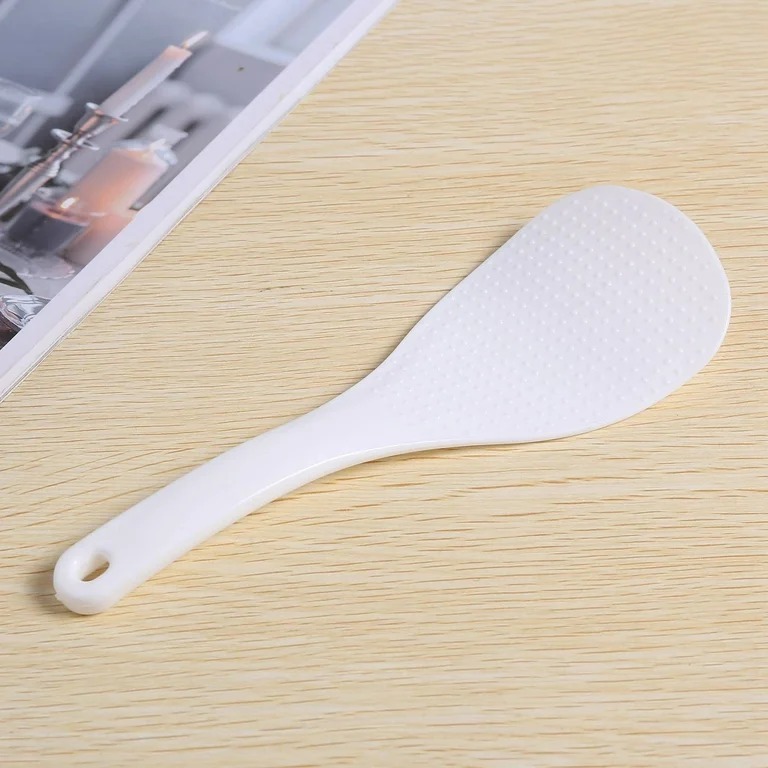ADVERTISEMENT
## Chapter 1: A Brief History of the Rice Cooker
### 1.1 The Origin of the Rice Cooker
Before we can fully appreciate the purpose of the rice cooker spoon and its bumps, it’s worth taking a moment to understand the invention of the rice cooker itself. Rice cookers, which have become essential kitchen tools worldwide, have their roots in Asia. In fact, rice cookers are a direct descendant of traditional Asian rice-cooking techniques, which often involved using a pot or a steamer.
The modern rice cooker, as we know it today, was invented in the 1950s by Japanese inventor **Toshiro Ikeda**, who worked for the **Mitsubishi Electric Corporation**. Prior to the rice cooker, rice was typically cooked on a stove or in large pots, which required careful monitoring to avoid burning or undercooking the rice. Ikeda’s innovation was in designing an automated, electric device that would ensure perfectly cooked rice every time, reducing the margin for error.
The rice cooker was initially designed for the Japanese market, where rice is a central component of daily meals. However, its convenience, consistency, and ease of use led to its worldwide success. By the 1970s, rice cookers became common in many households across Asia, and eventually, the rest of the world.
### 1.2 The Evolution of Rice Cooker Accessories
As rice cookers gained popularity, manufacturers began adding accessories that would improve the overall cooking experience. These included the rice spatula (or rice cooker spoon), the measuring cup, and the steaming tray. Over time, these accessories became more specialized, with certain features, like the bumps on the back of the rice cooker spoon, being developed for specific functions.
In short, the rice cooker and its accompanying tools were born from necessity and innovation, and today they represent a staple of kitchens worldwide. But what about the spoon with the mysterious bumps?
—
## Chapter 2: The Role of the Rice Cooker Spoon
### 2.1 What Is the Rice Cooker Spoon?
The rice cooker spoon, also known as the rice spatula, is one of the essential accessories that comes with most rice cookers. It is typically made from plastic or wood and is designed specifically for serving rice once it has been cooked. Its broad, flat design makes it ideal for gently lifting and fluffing the rice without causing it to become overly mashed or clumpy.
While the shape of the spoon is relatively straightforward, the bumps on the back of the spoon have intrigued many users. They seem to be a curious feature that isn’t immediately understood by everyone who uses a rice cooker. The question that often arises is: **What are the bumps on the back of the spoon used for?**
### 2.2 The Functionality of the Bumps
The bumps on the back of the rice cooker spoon serve a very specific purpose. While they might seem like a design choice or a decorative feature, they are actually quite functional. These bumps are intended to serve as a **drainage system**. Here’s how it works:
#### 2.2.1 Preventing Rice from Sticking to the Spoon
When you scoop rice from the cooker, some of it tends to stick to the surface of the spoon, especially when the rice is still a little moist. The bumps on the back of the spoon create small air gaps between the rice and the spoon’s surface, preventing the rice from sticking too much. This means that you can scoop and serve rice more easily without having to scrape off excess rice that has clung to the spoon. It essentially helps to **lift the rice** from the cooker in a smoother, more efficient manner.
#### 2.2.2 Reducing Rice Clumping
Clumping can happen when rice gets packed too tightly or when it’s left to sit too long in the cooker. The bumps help to minimize the pressure that could cause the rice to clump together. The grooves created by the bumps allow air to circulate around the rice and prevent it from sticking together in large, messy chunks. This helps ensure that each grain of rice remains separate, making for a much better texture and overall dish.
#### 2.2.3 Enhancing the Rice Cooking Process
The bumps also help to enhance the cooking process by ensuring that the rice cooker spoon can move through the rice without compressing it. This is particularly useful when fluffing the rice after it has been cooked. The slight separation of the grains due to the bumps allows for a better fluffing process, which results in a lighter, fluffier final product.
For Complete Cooking STEPS Please Head On Over To Next Page Or Open button (>) and don’t forget to SHARE with your Facebook friends
